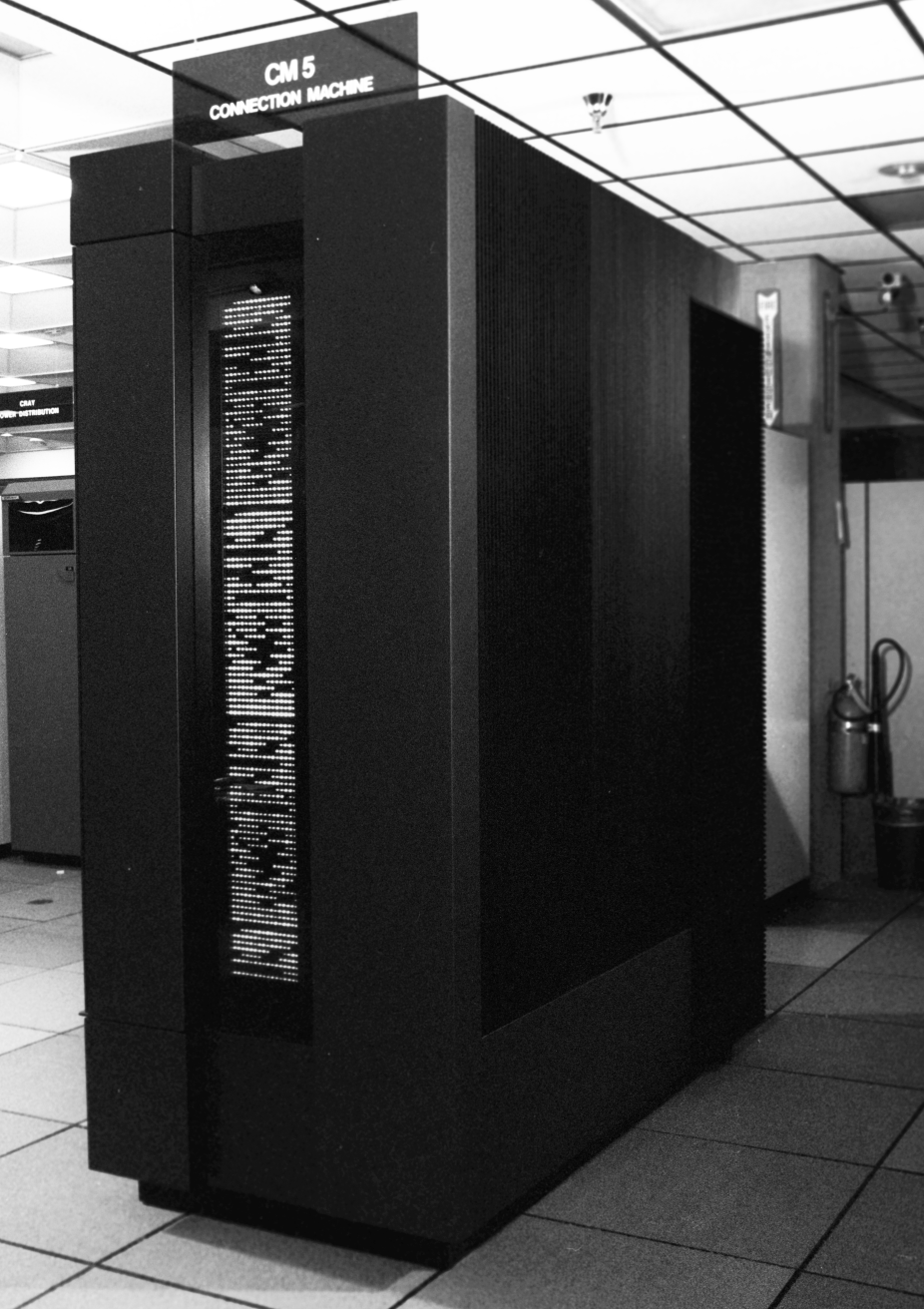Connection Machine 5 - Littlebear

Thinking Machines
In use: March 1, 1993 - November 1, 1996
Experimental and production use
Peak teraflops: 0.00
Processors: 32
Clock speed: 0.03GHz
Memory (terabytes): 0.00TB
A 32-node Connection Machine-5 (CM-5) from Thinking Machines Corporation arrived at NCAR on April 21, 1993. The CM-5 cost $1.47 million – $46,000 per node – and was paid for with Defense Advanced Research Projects Agency funds. By October 1993, about a dozen people were starting to use it.
Following its tradition of naming supercomputers after peaks in the Colorado Rockies, NCAR’s Scientific Computing Division named the CM-5 (specifically, its control processor) "Littlebear." (Whimsical system administrators then named the CM-5 compile server “Teddybear.”)
Each of the system’s 32 nodes had four vector units and a Sun SPARC microprocessor that could perform 22 million instructions per second. The machine had 1 gigabyte of internal memory (32 megabytes per node) and performed at a peak speed of 128 megaflops per node. The CM-5 also had a large scalable disk array with a UNIX file system and 24 gigabytes available for storing user data.
Within the CM-5, computational and disk storage nodes were integrated into a single architecture that featured scalable input/output, communications, memory, and processing. The CM-5 ran CMost, a Sun-based UNIX operating system that could service multiple users on a time-shared basis.
The CM-5 supported two programming models: data parallel and control parallel. The machine was decommissioned in October 1996.